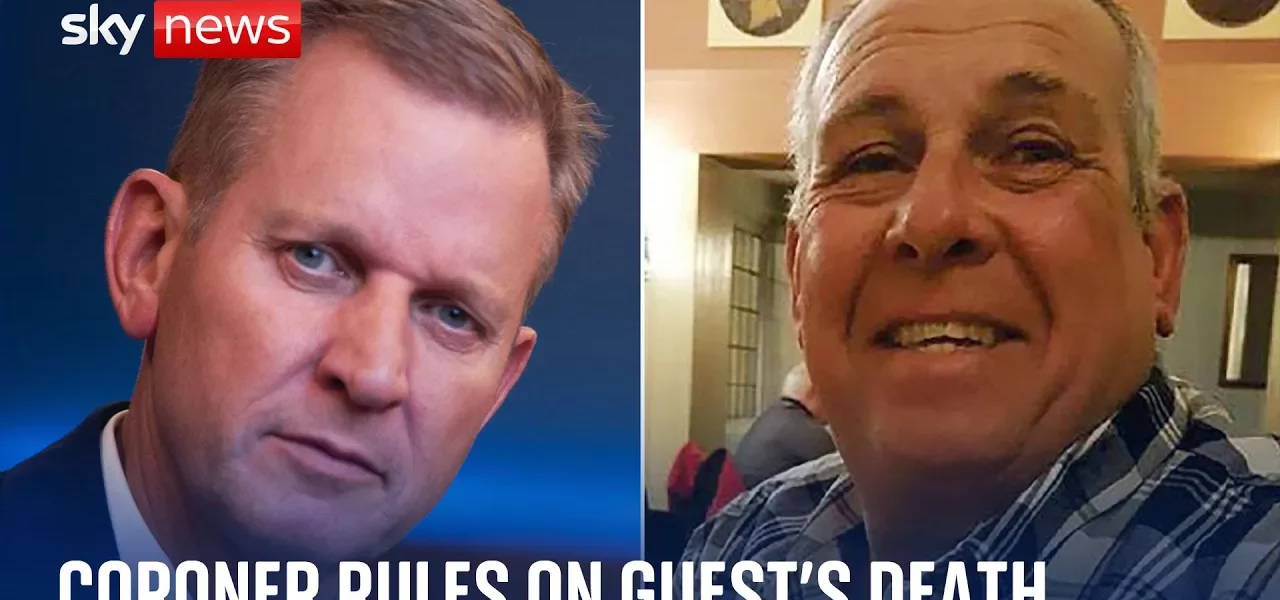Coroner’s Findings on Steve Diamond’s Death: A Comprehensive Analysis

This article delves into the coroner’s findings regarding Steve Diamond’s tragic death following his appearance on the Jeremy Kyle Show. We explore the mental health challenges he faced, the implications for media responsibility, and the broader context of mental health awareness.
Introduction
The recent coroner’s findings concerning the death of Steve Diamond have sparked widespread discussions about mental health, media ethics, and the responsibility of television programs in handling sensitive issues. Steve Diamond took his own life just seven days after appearing on the controversial Jeremy Kyle Show, leading to a public inquiry into the factors that may have contributed to his distress. In this article, we will provide a detailed examination of the coroner’s report, the context of Diamond’s life, and the implications for the media industry.
The Coroner’s Findings
The coroner’s investigation revealed critical insights into the circumstances surrounding Steve Diamond’s death. While there was significant media coverage leading to public speculation, the findings indicated a complex interplay of factors that contributed to his mental state.
Insufficient Evidence of Direct Cause
The coroner concluded that there was insufficient evidence to directly link Diamond’s appearance on the Jeremy Kyle Show to his subsequent suicide. This ruling emphasized that, although the show may have exacerbated his existing issues, it was not the sole cause of his distress.
History of Mental Health Issues
- Steve Diamond had a documented history of mental health challenges, including depression and self-harm.
- He had previously been diagnosed with a personality disorder, which complicated his emotional well-being.
- Prior to his death, he experienced a significant bout of depression, indicating that multiple stressors were affecting him.
Other Life Stresses
The coroner noted several other stressors in Diamond’s life that contributed to his mental state, including:
- Deteriorating relationships with significant others.
- Financial difficulties or job-related stress.
- Unresolved personal issues that predated his appearance on the show.
Media Responsibility in Mental Health Reporting
The case of Steve Diamond has reignited discussions about the role of media in portraying mental health issues. The Jeremy Kyle Show, known for its sensationalist approach, has faced scrutiny regarding how it handles vulnerable individuals.
Comments from Jeremy Kyle
During the coroner’s inquiry, Jeremy Kyle testified that he did not believe he had humiliated or belittled Steve Diamond. However, the impact of televised scrutiny on individuals’ mental health remains a contentious topic.
Aftercare and Support
The coroner highlighted that the aftercare provided to participants of the show, including emotional support, was an essential factor in their overall well-being. According to the aftercare records:
- Steve Diamond was reported to be emotionally contained following his appearance.
- He expressed a desire to rebuild his relationship, suggesting hope and a focus on recovery.
Conclusion
The coroner’s findings in Steve Diamond’s case underscore the complexity of mental health issues and the multiple factors that can lead to tragic outcomes. While the Jeremy Kyle Show has been criticized for its format and handling of sensitive subjects, the coroner’s verdict clarified that other significant stressors in Diamond’s life contributed to his mental distress. Moving forward, it is crucial for media outlets to adopt more responsible practices surrounding mental health representation. If you or someone you know is struggling with mental health issues, help is available. Reach out to organizations such as the Samaritans at 116 123 for support.
For further reading, check out our related articles on Media Responsibility in Mental Health and the Understanding Mental Health Issues.
“`




